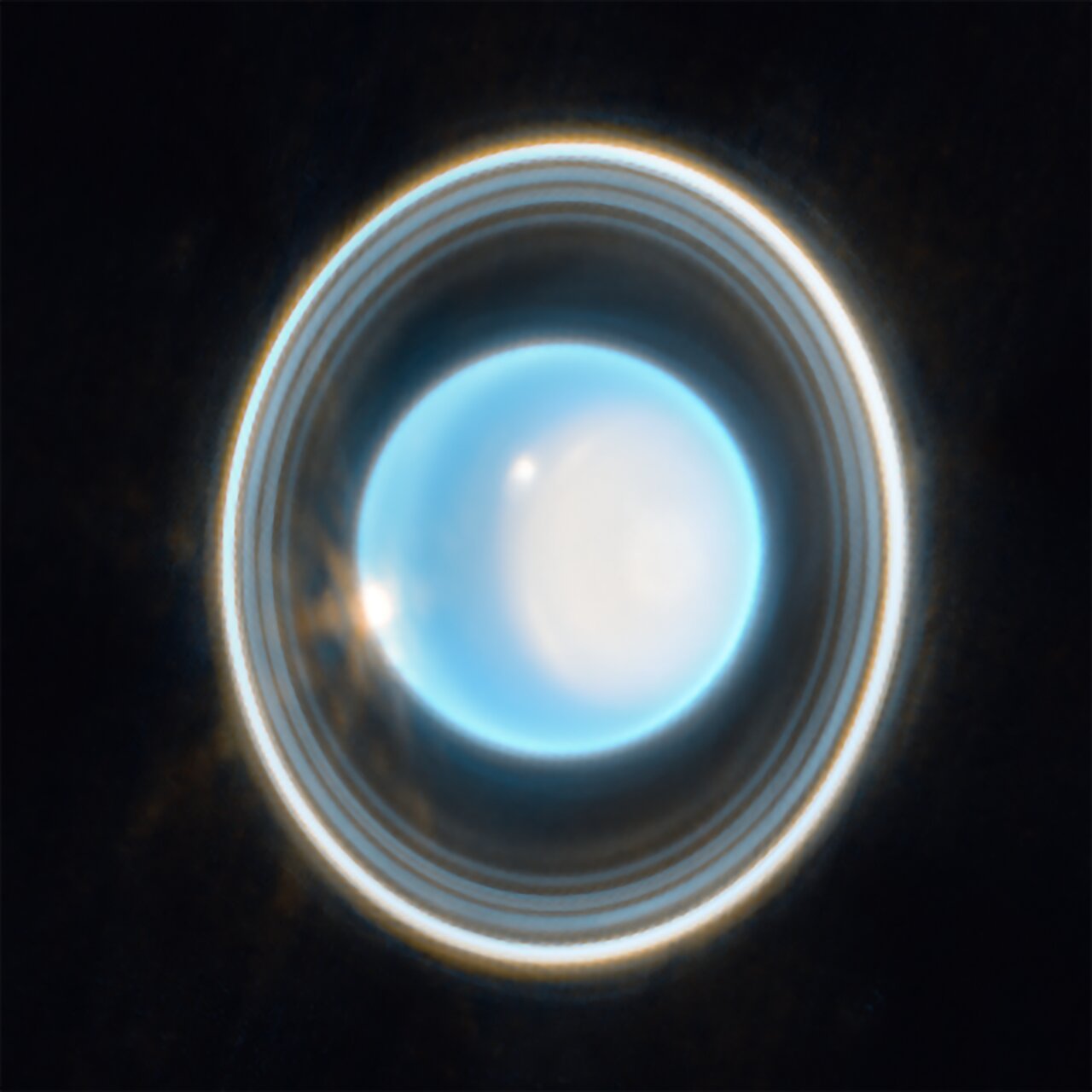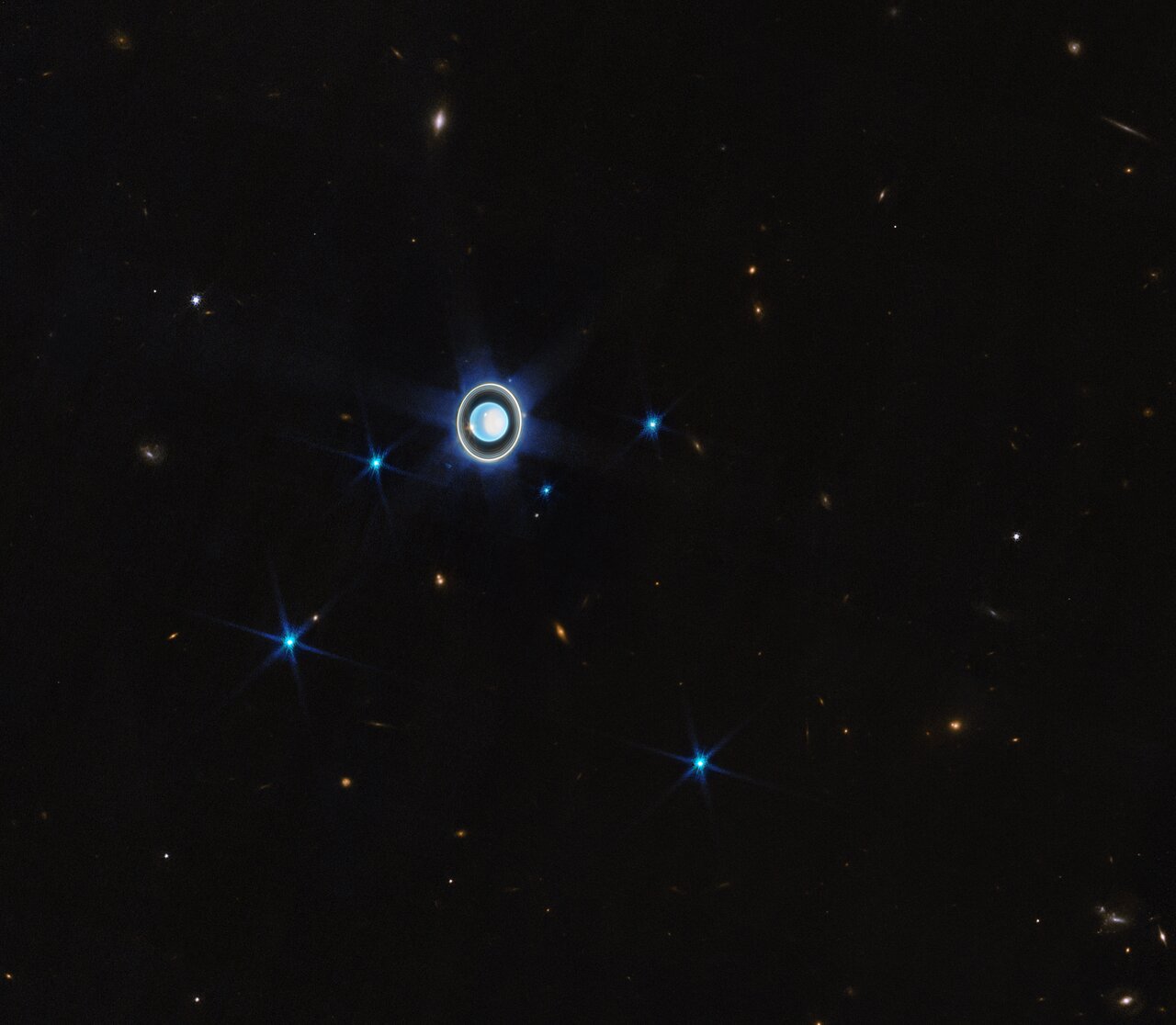James Webb Space Telescope Discovery
Clicking on each image will open the full resolution one. Try it!Clicking on "Raw images" image will yield all the relevant raw images.
Uranus (NIRCam Image)
This zoomed-in image of Uranus, captured by Webb’s Near-Infrared Camera (NIRCam) on 6 February 2023, reveals stunning views of the planet’s rings. The planet displays a blue hue in this representative-colour image, made by combining data from two filters (F140M, F300M) at 1.4 and 3.0 microns, shown here as blue and orange, respectively.
On the right side of the planet is an area of brightening at the pole facing the Sun, known as a polar cap. This polar cap is unique to Uranus because it is the only planet in the Solar System that is tilted on its side, which causes its extreme seasons. A new aspect of the polar cap revealed by Webb is a subtle brightening near the Uranian north pole.
At the edge of the polar cap lies a bright cloud and a few fainter extended features can be seen just beyond the cap’s edge; a second very bright cloud is seen at the planet’s left limb. Such clouds are typical for Uranus at infrared wavelengths, and are likely connected to storm activity.
 Zoomed-in image of Uranus
Zoomed-in image of Uranus
 Zoomed-in image of Uranus (Annotated)
This wider view of the Uranian system with Webb’s NIRCam instrument features the planet Uranus as well as six of its 27 known moons (most of which are too small and faint to be seen in this short exposure). A handful of background objects, including many galaxies, are also seen.
Zoomed-in image of Uranus (Annotated)
This wider view of the Uranian system with Webb’s NIRCam instrument features the planet Uranus as well as six of its 27 known moons (most of which are too small and faint to be seen in this short exposure). A handful of background objects, including many galaxies, are also seen.
 Wider view of the Uranian system
Wider view of the Uranian system
 Wider view of the Uranian system (Annotated)
Credit: NASA, ESA, CSA, STScI, J. DePasquale (STScI)
Wider view of the Uranian system (Annotated)
Credit: NASA, ESA, CSA, STScI, J. DePasquale (STScI)
 Raw images
Raw images